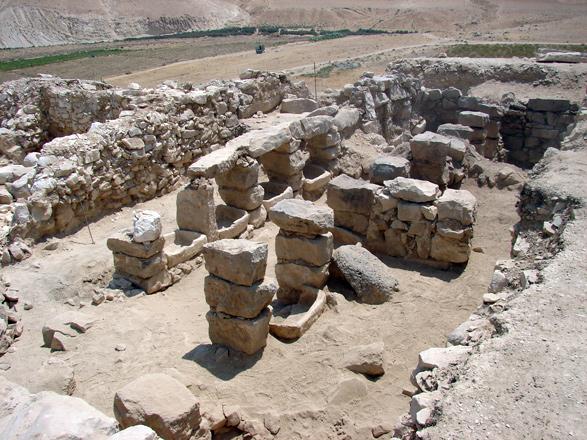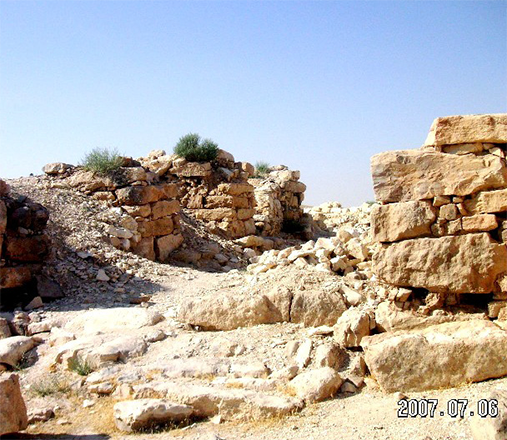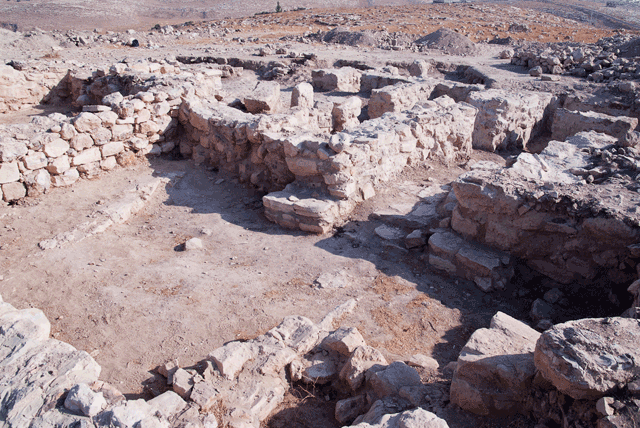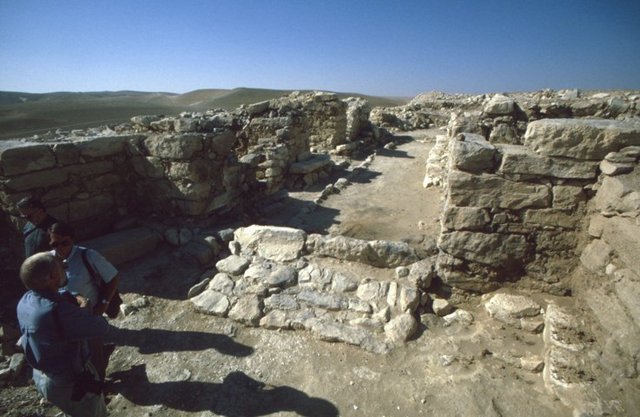You are here
Mudayna excavations point to Moab’s ‘complex’ regional relations
By Saeb Rawashdeh - Aug 20,2019 - Last updated at Aug 20,2019

Khirbat Al Mudayna, located some 48 kilometres south of Amman, is known for its significant Iron Age shrine (Photo courtesy of Khirbat Al Mudayna Thamad project)
AMMAN — Iron Age imports from Egypt, Cyprus, Phoenicia, Syria and Assyria indicate complex economic and political relations between Moab and the major powers in the region, according to a Canadian scholar.
Moab is the historical name for a mountainous part of land alongside the eastern shore of the Dead Sea. The existence of the Kingdom of Moab is attested to by numerous archaeological findings, according to historians.
Professor Emerita Michele Daviau, from the Department of Archaeology and Classical Studies at Wilfrid Laurier University, Canada, has worked in Jordan for years, including on Khirbat Al Mudayna, some 48 kilometres south of Amman.
Excavations in Khirbat Al Mudayna began in 1996 under her direction for the Wadi Thamad Project and continue until today.
Her research team found many statues and figurines at the site and tried to interpret them, the scholar noted, adding that figurines and statues reflect the religious practices and beliefs of the inhabitants.
“There are several hundred animal and anthropomorphic figures ranging in size from 3-50 cm,” Daviau elaborated, adding that for the most part, they represent the deities themselves as well as the worshipers, who offer an image of themselves in hopes that they will be remembered by a god.
“At Mudayna, these figurines could have been used in the temple cult as well as in domestic and industrial rituals,” the scholar told The Jordan Times in a recent e-mail interview.
The influences suggested in the iconography are from Syria, Phoenicia, Cyprus, Judah, and Egypt during the late eighth until seventh centuries BC, she continued.
“However, the figurines are all broken so the identification of the origin of these influence is tentative,” Daviau noted.
In addition three free-standing limestone altars and two limestone pegs were found at the site, the scholar said, adding that the pegs remained intact while the altars were broken.
Regarding future plans Daviau said: “We intend to return to Mudayna to complete work at both the north and south ends of the site to better understand the fortifications and the building styles within the settlement.”
Related Articles
AMMAN — Thousands of animal bones, ceramic animal figurines, wall stones and limestone altars have been found at an Iron Age temple in Khirb
AMMAN — Hirbet Atarus is a small Iron Age site located in central Jordan, some 14km northwest from Dhiban and 4km east from Machaerus fortre
AMMAN — Some of cultic places during the Bronze and Iron Age on a territory of Transjordan are Ataruz, Deir Alla, Ammon, Mudayna and Busayra














